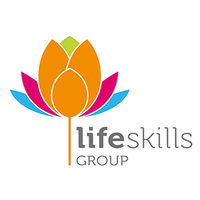Readiness to learn – and our sphere of control, influence and concern
I’m sure you are familiar with the spheres of control, influence and concern. Covey gets a lot of credit for popularising these in his book ‘The 7 Habits of Highly Effective People: Powerful Lessons in Personal Change’, although the idea predates this.
I quite like this representation by ‘Discovery in Action’. It shows the spheres as circles:

The basic idea is that we get the most bang for buck when we focus our time and energy on the things that are within our control and influence and we should be conscious of how much time we spend on things in the circle or sphere of concern, aka things we can’t control.
Since this concept became mainstream there has been some great work on strategies for expanding your sphere of control and influence or shifting it to focus on the things that really matter. Both of which make a lot of sense and are obviously worth doing.
I was curious about which circle teachers thought student readiness to learn sat in.
What do teachers say when asked to plot student readiness to learn?
Turns out, this is a terrible question to ask for a quantitative answer. Nearly all educators asked wanted to answer with: “It depends on the student.”
When I dug a little deeper, what educators meant was that the level of impact they felt they could have on how ready a student was to learn varied student to student. For some students, the obstacles they were overcoming to make it to the classroom pushed them to the outer limits of the sphere of influence or even into the sphere of concern. Other students however came to school receptive to the teachers influence and for these students, educators felt they were able to directly control the readiness to learn in their classroom. Overall, educators mostly landed on Student Readiness to Learn sitting within their sphere of influence and therefore worth focusing on. After all, it doesn’t matter how great your lessons are if you have disengaged students.
Interestingly, when students were asked the same question, they felt that teachers directly impacted on their readiness to learn and placed the teacher in the sphere of control. Many of students were able to cite different classrooms they had been in and the conditions that primed them for learning (it should be noted that other students in the classroom were also a major factor referenced).
If educators think readiness to learn is in their sphere of influence and students think their readiness to learn is in the sphere of control of their teacher, then it is happening regardless of whether we are conscious of it or not. The obvious next question to ask then becomes: Is there anything we can do to make this influence/control better?
I’m a big believer that teachers control the climate in their own classroom and that readiness to learn is not static or linear and can shift day to day (minute to minute) and to steal a quote from Professor Hattie “teachers who are students of their own effects are the most influential in raising student achievement”. Therefore, I would argue that the key to positively influencing student readiness to learn is providing teachers with relevant and reliable real time data about student emotions and creating the space for teachers to experiment with what works best for their students.
[ Rydr Tracy is the Head of Education at Life Skills Group and former Director Strategic Priorities at CESE. He is a specialist in evidence-informed practice in educational innovation, with a career focus on strategic change that improves student outcomes. He draws on a rare blend of successful experience in schools, system leadership roles and industry practice – experience that has given him deep understanding of the complexities of the education sector from the classroom to the boardroom and a demonstrated capacity to generate practical recommendations that are grounded in context and evidence. ]
.png?width=500&height=374&name=Logo_transparent%20(2).png)





